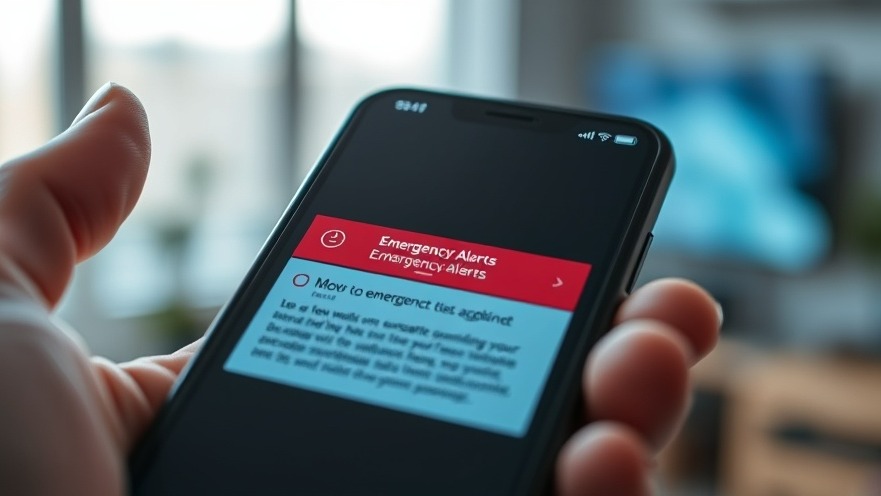
Why Emergency Alerts Matter for Your Safety
In a world where natural disasters and emergencies seem increasingly common, the value of receiving timely information cannot be overstated. For digital nomads who often find themselves in unfamiliar locations, enabling emergency alerts on mobile devices becomes crucial. Access to immediate updates regarding severe weather, public safety issues, and local emergencies can provide a necessary buffer between your current situation and potential danger.
How to Enable Emergency Alerts on Your Mobile Device
Setting up emergency alerts on your smartphone is a simple yet vital task that can enhance your safety. Here’s how to do it on both iPhones and Android devices.
For iPhone Users
Most emergency alerts are already activated by default on your iPhone. To confirm your settings:
Open Settings.
Go to Notifications.
Scroll down and find the Government Alerts section.
Ensure that all toggles are turned on, especially for local updates under Emergency Alerts. By doing this, you'll receive timely notifications about impending disasters such as flash floods or earthquakes. The option to keep sound on even during silent mode will ensure you won't miss critical alerts.
For Android Users
Similarly, Android users can activate emergency alerts through these steps:
Open Settings.
Navigate to Safety and emergency.
Select Wireless emergency alerts.
Here, you'll find options to activate alerts for various emergencies, including notifications from FEMA for national emergencies. It’s vital to ensure you’ve enabled these settings no matter where your travels take you.
What Kind of Alerts Can You Expect?
When you enable these alerts, you can expect notifications about severe weather warnings, civil emergencies, power outages, and other significant dangers. According to the National Weather Service, alerts vary by region but generally include:
Severe weather alerts (like tornadoes and hurricanes)
Public safety notifications (civil emergencies, hazardous conditions)
AMBER alerts for local abducted children
National emergency alerts from FEMA
This range of information helps keep you informed and safe whether you're at a bustling café in Thailand or hiking through the valleys of Colorado.
Emotional Preparedness: Why It Matters
While physical safety is critical, emotional preparedness during emergencies plays an equally important role. The uncertainty that comes with traveling can heighten anxiety, and knowing you have a reliable source of information can help ease that stress. Having alerts enabled creates a safety net, allowing you to remain calm and collected in potentially frightening situations.
Further Resources and Emergency Preparedness
Staying safe also involves being prepared beforehand. Consider building an emergency kit that includes essentials like food, water, a first-aid kit, and navigation tools. Additionally, follow local news sources and communities online that keep track of ongoing emergency alerts in your area. Taking these steps in tandem with enabling alerts can drastically improve your safety and peace of mind.
Immediate Actions to Enhance Your Safety
Take a moment right now to explore your smartphone settings and enable those emergency alerts. This proactive step can be the difference between being informed or facing a dire situation without guidance. It’s a simple but crucial way to ensure your well-being as you navigate the world.
Conclusion: Don’t Wait Until It’s Too Late
As a digital nomad, adaptability and preparedness are key to maximizing your experiences. Enabling emergency alerts is just one of the many steps you can take to ensure your safety while exploring the world. With the right preparation, you can focus on productivity and adventure instead of worrying about what might happen next. So, check your settings today and ensure you’re ready for whatever comes your way!
 Add Row
Add Row  Add
Add 




Write A Comment